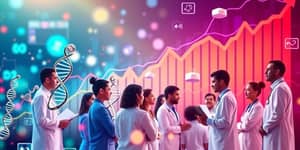
In the first half of 2025, global monetary authorities have dramatically split their policy trajectories, unleashing a torrent of unpredictability in foreign exchange markets. For the first time since the early 2000s, a clear pattern of unprecedented policy divergence among central banks has emerged, reshaping investor strategies and corporate planning.
The Federal Reserve’s decision to maintain rates near 4.25%–4.50%, driven by stubborn core inflation and resilient labor markets, stands in stark contrast to the European Central Bank’s data-driven rate cuts and the Swiss National Bank’s aggressive easing cycle aimed at taming franc strength. Meanwhile, the Bank of Japan edges toward gradual tightening, and the Bank of England treads carefully amid mixed domestic signals.
The result is a revival of FX swings at multi-year highs, as capital flows chase yield advantages and market participants brace for sudden policy turns. Understanding the anatomy of this renewed volatility is critical for investors, businesses, and policymakers alike.
The disjointed policy landscape reflects divergent economic conditions across regions. In the United States, GDP growth of 2.7% in 2024 outpaced the 1.7% average among advanced economies, supporting the Fed’s hawkish stance. Inflation remains sticky above target, compelling the Federal Open Market Committee to keep its foot on the brake.
By contrast, policymakers in Frankfurt and Bern have grown more comfortable with easing. The ECB’s 25 basis point cut in June 2025 lowered the deposit rate to 2.00%, citing subdued consumer price gains and slowing business investment. The SNB’s 50 basis point reduction marks one of the most aggressive easing moves among major central banks this cycle, aimed at curbing franc appreciation and shielding export competitiveness.
The widening yield gap between the US 10-year Treasury and its peers has reached levels not seen since 1994, underpinning the dollar’s strength and intensifying pressure on currencies from the euro to emerging market assets.
Experts warn that unless monetary policies converge, these widening yield differentials and capital swings will perpetuate volatility well into 2026 and beyond.
Currency markets reacted sharply to these policy signals. The DXY dollar index climbed by over 7% in 2024 and continues to find support for further gains as the Fed remains firm.
In the eurozone, the ECB’s mid-year rate cut initially propelled EUR/USD above 1.10, only for the pair to retreat amid growing Fed-euro yield spreads. According to JP Morgan estimates, EUR/USD may eventually rise to 1.29 over the longer term, but the path is uncertain and paved with potential short-term reversals.
Volatility spikes have not been confined to G10 currencies. Emerging markets such as Mexico, Turkey, and South Africa have seen their currencies undulate in response to shifting US Treasury yields, global risk appetite, and domestic vulnerabilities.
“The era of calm currency markets is over,” notes a senior strategist at a major bank, emphasizing the unpredictable nature of capital flows in this environment.
Several intertwined factors drive the current turbulence:
These elements interact, creating feedback loops: widening yield gaps spur capital flows, which in turn influence exchange rates, prompting policy reactions or market interventions. Such loops heighten the risk of abrupt corrections and whipsaws.
Analysts emphasize the importance of monitoring short-term signals—from central bank minutes to inflation surprises—to anticipate sudden shifts in sentiment and positioning.
Sharp currency moves have tangible effects on trade balances, corporate earnings, and consumer prices. A 10% appreciation of the dollar over a few months can erode profit margins for US exporters and multinational firms reporting in other currencies.
Similarly, a weaker euro may boost European industrial exports but inject further inflation through higher import costs, complicating the ECB’s efforts to balance growth and price stability.
In emerging markets, volatile exchange rates can quickly translate into higher debt servicing costs for firms and governments with dollar-denominated liabilities. Some countries have preemptively raised rates or deployed foreign reserves to calm markets, but these actions can strain fiscal positions and reserves over time.
For businesses and households, unpredictable currency moves lead to heightened hedging costs and planning challenges. Firms may face increased operational expenses as they lock in forward rates, while consumers confront fluctuating prices on imported goods, travel, and tuition fees overseas.
Looking forward, currency volatility is likely to remain elevated as policy paths diverge further:
Scenario-based planning is essential. Investors should consider stress-testing portfolios against extreme moves in EUR/USD, USD/JPY, and EMFX. Incorporating options strategies, cross-asset hedges, and real assets can help mitigate sharp losses.
Despite the turbulence, opportunities exist in underappreciated currencies and sovereign debt markets where yields offer compensation for risk. However, success requires disciplined execution and vigilant monitoring of policy communication.
As global monetary authorities chart divergent courses, currency markets have reemerged as epicenters of volatility and uncertainty. The interplay of rate differentials, economic growth gaps, and policy interventions will shape global finance and trade through 2025 and beyond. In this landscape, informed decision-making and agile risk management are indispensable for navigating the unpredictable currents of FX markets.
References













